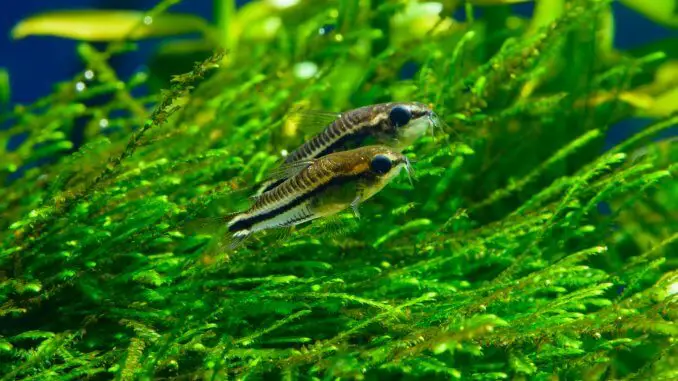
If you are about to set up a peaceful community aquarium, the Pygmy Cory may be the fish for you. This friendly little Catfish is perfect for a beginner who may find aggressive species a bit daunting.
They are ideal for small aquariums and are one of the smallest fish out there. Many people find this species adorable and it has made them very sought-after.
Corydoras is a very familiar group to most aquarists, but the Pygmy Cory Catfish is a unique species with some rare behaviors to keep you staring at your tank.
If this sounds like what you are looking for then read on…
TABLE OF CONTENTS
Pygmy Cory Facts & Overview
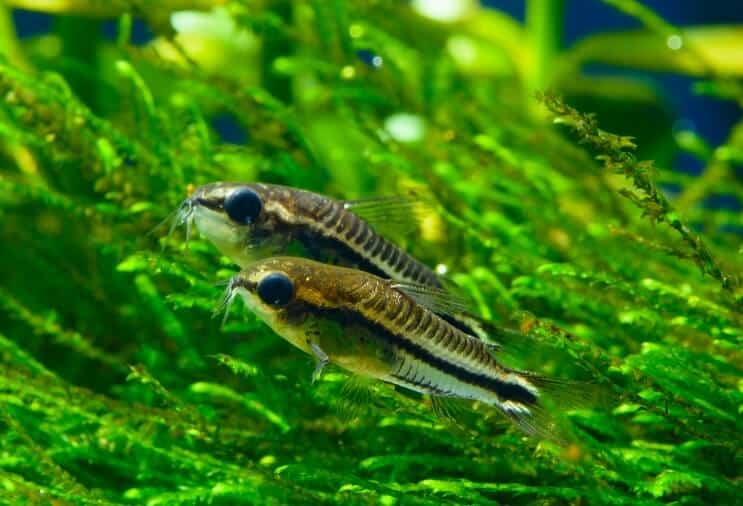
| Category | Rating |
| Care Level: | Beginner |
| Temperament: | Peaceful |
| Color: | Silver with black horizontal lines |
| Lifespan: | Up to 3 years |
| Size: | Up to 1 inch |
| Diet: | Omnivore |
| Family: | Callichthyidae |
| Minimum Tank Size: | 10 gallons |
| Tank Setup: | Freshwater, sandy with hiding spots |
| Compatibility: | Small peaceful community |
The Pygmy Cory (Corydoras pygmaeus), or Pygmy Catfish, is a small freshwater fish from the Corydoradinae sub-family.
‘Cory’ is short for Corydoras, which is their genus.
The Pygmy Cory is mainly found in the Madeira River basin in Brazil, but populations are found across the South American continent.
Originally there was only thought to be one miniature Corydoras species (Corydoras hastatus). In the early 1900s, it was realized that many species had been misidentified, and so the Pygmy Cory species was described.
They thrive in tropical aquariums and are a great choice for beginners, though they are popular with experienced aquarists too.
Their popularity means that most pet stores have a supply, so they are readily available – each fish will cost around $2.
Since they are small, they do not live as long as larger aquarium species. Usually, they live to be 3 years old, but this could lengthen or shorten based on how well they are cared for.
Typical Behavior
These are very well-behaved fish.
They keep to themselves and can be easily added to a community setup.
Most of their time is spent in the lower levels, but they will swim in shoals higher up the tank. You should bear this in mind when stocking the tank, to prevent crowding the mid-levels.
You might see them right up at the surface. They can use their intestine to take in oxygen from the air. This is less efficient so they usually only do it if the water quality is poor.
Appearance
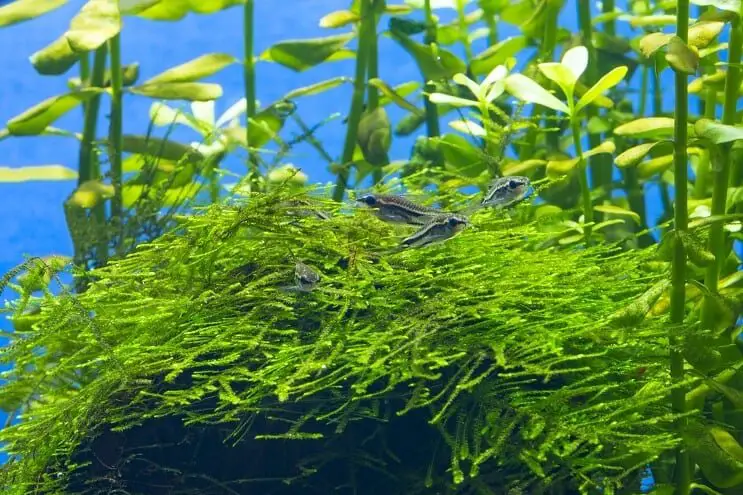
They look like most Corydoras Catfish, apart from their size.
As the name suggests, Pygmy Cory is very small. Females tend to be roughly an inch long, but males are even smaller, reaching just 0.75 inches. Females are often broader than males too, especially when carrying eggs.
Their body is silver with a solid black line that runs horizontally all the way from the snout to the tail fin. A second, thinner black line runs lower down along the body.
When fry hatch, they have vertical stripes on their sides, but these will have gradually faded to be replaced by the horizontal stripes after a month.
The black markings are how you distinguish them from Corydoras hastatus – they have black spots on their tails whereas Pygmy Cory does not.
While they are not one of the most colorful fish, their small size offers a cute appeal that most people cannot resist.
Habitat and Tank Conditions
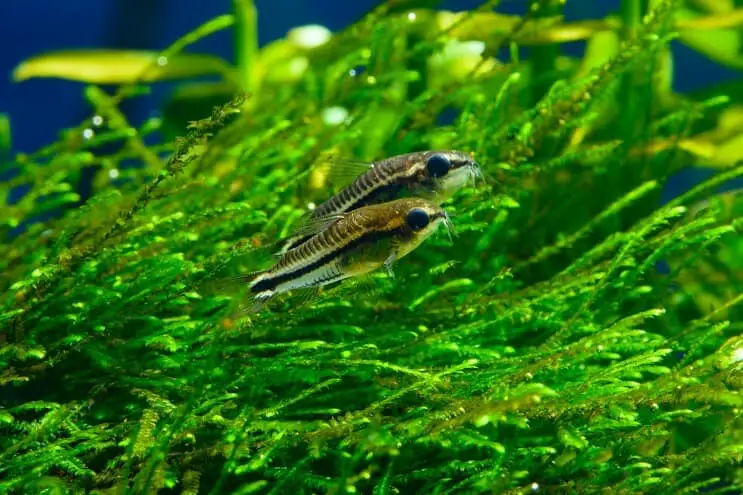
The Pygmy Cory is found in the smaller tributaries to larger rivers in South America. These include the Madeira River in Brazil, the Nanay River in Peru and the Aguarico River in Ecuador.
All these rivers share a tropical climate, but the temperature and pH can vary between them. Water movement would be slow and there would be plenty of access to light.
Catfish stay at the riverbed, hiding among plants and debris such as fallen branches that sit on sandy sediment.
Tank Conditions
You need to choose a similar substrate for your aquarium.
Sands are best because they are softer, which protects your fish from scratching their barbels when searching for food. Barbels are sensitive and if they become damaged the fish may struggle to find food.
Bottom-dwelling fish like this enjoy having plenty of hiding spaces. You can make these using a mixture of plants and decorations. Rocks and bogwood help to create a natural aesthetic. Pygmy Cory would enjoy swimming through a carpet of Dwarf Hairgrass, but taller plants like Amazon Swords and Java Fern work well too.
Set your heater to 72-79°F, and make sure the pH stays within 6-8.
The only other pieces of equipment you need are an efficient filter and standard aquarium lighting.
If the tank is set up well, not only will your fish stay healthy, they will also be much more active and interesting to watch.
What Size Aquarium Do They Need?
Pygmy Cory is tiny fish that are great for a small aquarium.
10 gallons is the minimum size for a group of 4-8 individuals, increase this size if you want a larger group.
Each additional fish only needs about 2 gallons to be comfortable.
Tank Mates
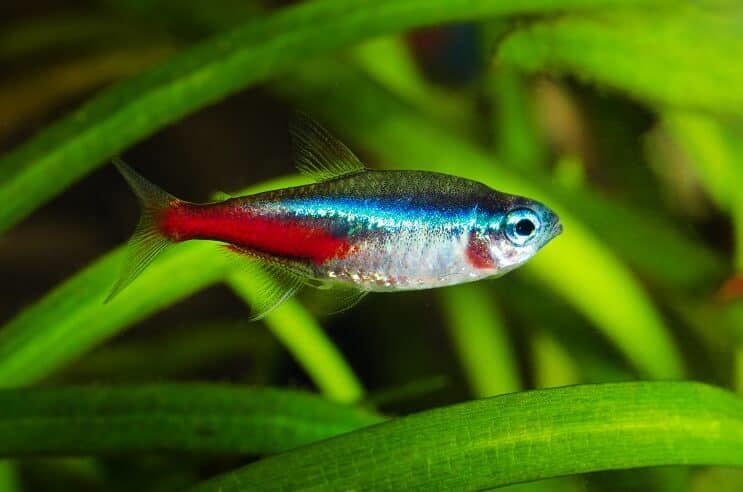
There are lots of potential tank mates out there.
Pygmy Cory is very peaceful and won’t start any fights. If tank mates are peaceful too, there should not be any compatibility problems.
The only exceptions to this are large species, as Pygmy Cory is small so could easily fit in a bigger fish’s mouth. The mouths of tank mates should be smaller than an inch.
This leaves plenty of aquarium favorites available. Those such as Neon Tetras, Zebra Danios, Guppies, Dwarf Gourami, Mollies, Marbled Hatchetfish, and Cherry Barbs are excellent mid-to-upper level swimmers.
You could use Otocinclus, Kuhli Loaches, or Chinese Algae Eaters as companions for the lower areas.
Invertebrates are an interesting way to mix in some different behaviors to freshwater tanks. Cherry Shrimp or Mystery Snails are common, but there are lots of other species too.
Keeping Pygmy Cory Together
This fish enjoys the company of its own kind.
They often shoal (which is rare for a bottom-dweller) and may even swim in groups in the mid-levels of the tank (which is even rarer).
Keep them in groups of at least four or more, but eight is recommended. The larger the group, the more impressive the sight.
Diet
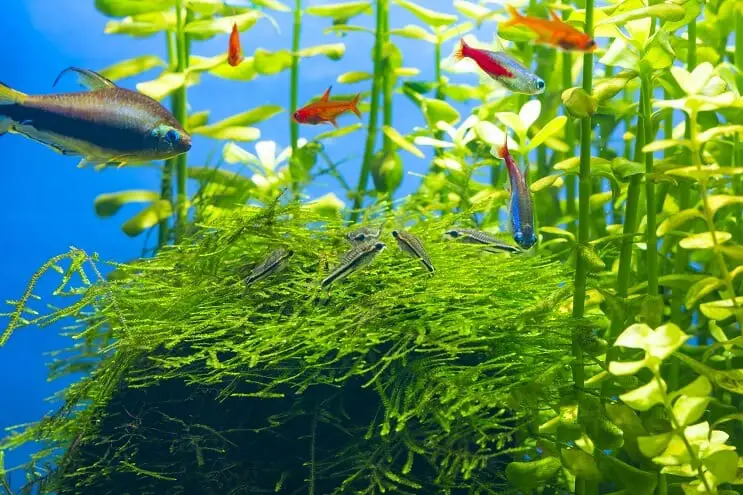
These fish are omnivorous, which means they will happily accept both meats and plants.
This is a great trait because you have a lot more options when designing your diet.
The easiest choices are dried foods, they are sold cheaply in all pet stores. Pellets and wafers are particularly useful because they quickly sink straight to your Pygmies.
Dried foods are not very nutritious though so they should be supplemented.
To supplement their diet you could try bloodworms, insect larvae, or brine shrimp.
You could even chop up some green vegetables from your kitchen, or use them to make some homemade fish foods – this is a very cheap way to vary up the diet.
Don’t mistake Pygmy Cory for algae eaters. This is a common assumption, but they need more than just plant-based foods.
Watch them at feeding time to make sure everyone is getting food. Other species could steal all the food before it has managed to sink to the bottom of the tank. Feed them once or twice a day. They only need to feed for around 2 minutes, but they will continue to scavenge for food afterward that might have been initially missed.
Care
Diseases are much more common in unclean environments, so your Pygmy Cory will soon pick up an illness if you do not know how to maintain your aquarium effectively.
Perform water changes every two weeks and wipe down algae before it gets out of control – weekly water tests are a good way to quickly spot if water conditions change.
It is also important that you design a healthy diet, as a lack of nutrients can cause a weakened immune system, making it hard for a fish to fight off disease.
One disease that Pygmy Cory is particularly susceptible to is red blotch disease. This is characterized by bloody sores on their body (usually the belly). It occurs when the fish are stressed by environmental conditions. The water parameters need to be maintained so perform water changes each week. Low oxygen is thought to be the main factor.
Another potential issue is Ich (white spot disease). This is a common problem for many species in the aquarium trade. It’s an ectoparasite that presents as white spots across the body and fins.
Ich is often introduced through the addition of new fish or unclean equipment. To prevent it, quarantine new fish and clean second-hand equipment thoroughly.
Breeding
Getting this species to breed is relatively easy.
They mate regularly, so the hardest part is caring for the fry. If you thought the adults were small, just wait until you see the offspring!
Spawning should happen naturally if your Pygmy Cory is fed a nutritional diet and healthy water conditions are maintained. During mating, a female could lay up to 100 eggs at a time. She holds a few eggs at a time in a pouch by the pelvic fin until the male fertilizes them.
The fertilized eggs are attached to a safe surface until they hatch. Keep watch over them, remove any that develop a fungus as it could spread and damage the other eggs.
Parents should be separated from the eggs because they might eat them.
Once the fry emerges, you will need to start feeding them. They can only eat very small foods because their mouths are so small. You can use infusoria or crushed flakes until mature enough to eat an adult diet.
Are Pygmy Cory Suitable For Your Aquarium?
These tiny fish can fit into even the smallest of aquariums.
They are great for peaceful community tanks as they mix in well with a range of species.
Pygmy Cory displays some unique behaviors that you won’t see elsewhere. It’s rare to see Catfish like this swim together so high up the tank.
Anyone can enjoy this small shoaling species.
They are easy to breed, feed, and care for. This makes them popular with beginners and veterans alike.
Why did you choose Pygmy Cory? Let us know in the comments section below…

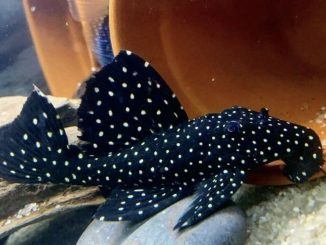
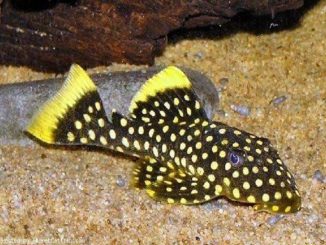
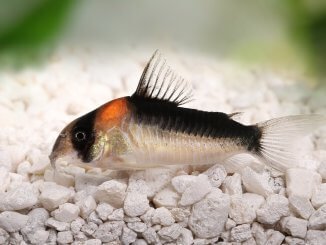
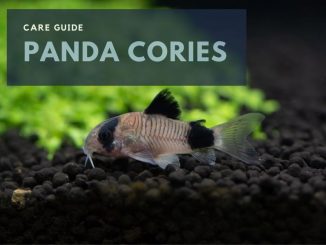
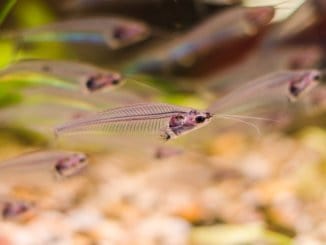
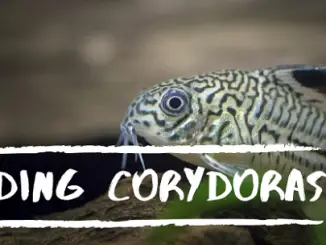
can i kepp this with betta in planted tank??
my tank size is 8 gallon
I would say no, Bettas will eat fish that are smaller then them and can be territorial.
Can I put pygmy Cory’s in my fry tank, I have platy fry ranging from 1week to 6weeks.